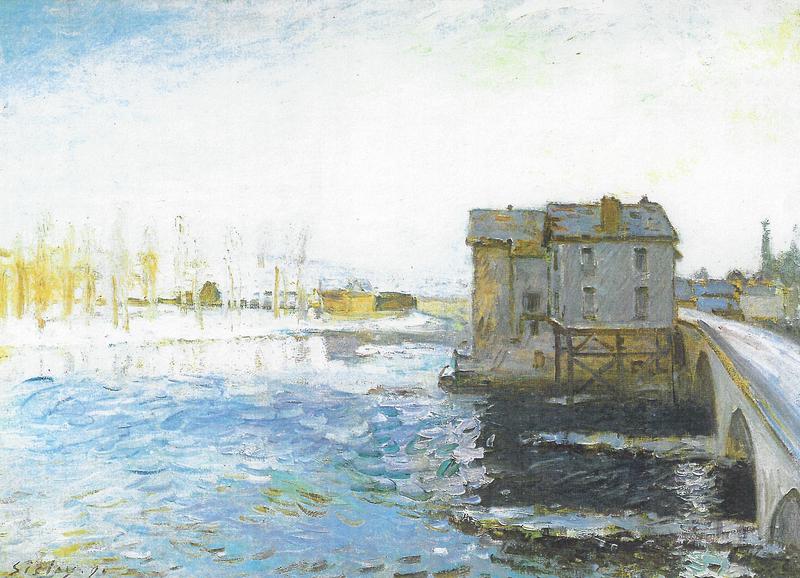Le Pont de Moret et les Moulins

Sisley moved to Moret in 1880 and quickly felt inspired by the town which would remain his home until his death in 1899. He wrote of the place in a letter to the critic Adolphe Tavernier: “It is at Moret – in this thickly wooded countryside with its tall poplars, the waters of the river Loing here, so beautiful, so translucent, so changeable; at Moret my art has undoubtedly developed most… I will never really leave this little place that is so picturesque” (Richard Shone, Sisley, New York, 1992, p. 123). During his years at Moret, Sisley produced a series of canvases depicting the same motif at different times of the day. Despite his financial difficulties, there was a demand from both collectors and dealer Durand Ruel for attractive landscapes. Christopher Lloyd wrote of Sisley’s paintings of the late 1880s and early 1890s: “All the experience of the previous decades was blended in these canvases which amount to the summation of his output: the paint is richly applied with the impasto more pronounced than in previous works, the brushwork more insistently rhythmical, the execution more rapid, and the color more vibrant” (C. Lloyd, “Alfred Sisley and the Purity of Vision,” Mary Ann Stevens, ed., Alfred Sisley, New Haven, 1992, p. 24).
Richard Shone discussed the appeal of this picturesque town, which Sisley painted here in 1890: “The fame of Moret rested not so much on what was found inside the town but on the view it presented from across the Loing. Old flour and tanning mills clustered along the bridge; the river, scattered with tiny islands, seemed more like a moat protecting the houses and terraced gardens that, on either side the sturdy Porte de Bourgogne, in turn defended the pinnacled tower of the church. Add to this the tree-lined walks along the river, the continuous sound of water from the weir and the great wheels of the mills, the houseboats and fishermen, and there was, as every guidebook exclaimed, ‘a captivating picture’, a sight ‘worthy of the brush’. These supremely picturesque aspects of Moret left Sisley unabashed. Gathered in one spot were the motifs that had mesmerized him since he began to paint. Here were water, sky, reflections, a busy riverside; the multi-arched bridge was for the artist the last in a long line of such structures going back through Sèvres and St-Cloud and Hampton Court to Argenteuil and Villeneuve-la-Garenne. Here was that conjunction of man-made and natural, the interleaving of foliage and house fronts between sky and water' (R. Shone, Sisley, London, 1992, p. 159).



